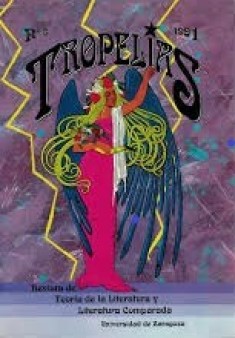Semiotic narratology: the "point of view" question
DOI:
https://doi.org/10.26754/ojs_tropelias/tropelias.199123459Keywords:
Semiotics, Narratology, point of view, discourseAbstract
The paper defends a General Narratology ―valid for any substance and form of expression and for any genre or type of discourse, artistic or not― integrated in a General Semiotics Theory to keep the scientific criterion of coherence, to generate each one of the components of the theory and the object analyzed from others, etc. The author separates the scope of enunciation from that of discursivization; and the instances of enunciation from those of discursivization and those of implicit enunciation. The first ones do not exist in the statement; the second ones can be made explicit in it; the third ones, never, and yet, exist in it.
On the contrary to what is held by most researchers, the paper states that there are morphemes of "visual" expression ―motivated (non-arbitrary) of bidimensional perspectiva artificialis― specialized in the roles of discursivizer subjects. In the "visual" expression, on the contrary to the usual practice, the author opposes the "visual" discursivizer ―or perspectivizer or plasticizer or imageur or "visual narrator", located in the Origin of the Perspective― the appreciator ―the "focalizator" , the person in charge of the "point of view", the one that assumes as responsible the predicate (according to him, it is like that), but not the production of the discourse―.
Based on this distinction, the paper describes in an original way phenomena such as those of indirect and free indirect discourse, identifies them in the "visual" expression ―photographic, cinematographic― and dissociates radically the opposition between non-direct discourse and direct discourse, from the opposition, different, between non-indirect and indirect discourse.
Downloads
Downloads
Published
How to Cite
Issue
Section
License
Los artículos enviados a la revista Tropelías deben ser originales e inéditos, no publicados previamente en cualquier soporte. Únicamente se aceptará material publicado total o parcialmente con anterioridad, o que esté en proceso de evaluación en otra revista, si se hace constar la causa de tal duplicación y se facilita la fuente donde ha aparecido dicho artículo.
Las imágenes que se incluyan en los artículos estarán libres de derechos de reproducción y, en caso contrario, los autores deberán presentar los permisos para su publicación y asumir los pagos derivados de ello.
Los artículos y reseñas publicados en la revista Tropelías pueden ser incluidos en repositorios temáticos o institucionales desde el momento de su publicación, sin modificación alguna e indicando claramente su procedencia.


